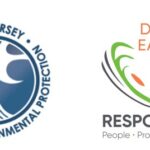Tidelands are essential ecosystems. They provide habitats to countless flora and fauna, both aquatic and on land. Yet a function of tidelands, which becomes more pressing as global temperatures rise, is the role of tidelands as a first defense against sea level rise.
Davison Eastman Muñoz Paone P.A. has extensive experience in Tideland and Riparian Rights law. Out of the 21 counties in New Jersey, the State of New Jersey owns tidelands in 17 of them, which makes having attorneys seasoned in the ins-and-outs of Riparian law essential.
There are a few different kinds of Tidelands that are owned/protected by the State of New Jersey:
Flowed Tidelands – Tidelands currently flowing with water. Structures interacting with these waters must be permitted.
Formerly Flowed Tidelands – Historic tidelands which are no longer flowing with water. Permitting for these lands is different from flowed tidelands as structures on these lands are not interacting with active tide water.
Wetlands – Areas of land subject to Tidal action and becomes saturated with water at least once a year, or that grow specific wetland plant species.

According to the NJ Department of Environmental Protection (NJ DEP), “Tidelands, also known as riparian lands, are all lands that are now or were formerly flowed by the mean high tide of a natural waterbody (such as the ocean, bays, and tidal sections of rivers and creeks, and also includes marshlands inundated by the tide).”
While many home and property owners may not consider the presence of Tidelands or Wetlands on their properties, and may even build structures on these lands unknowingly, all Tidelands and Wetlands in New Jersey are owned/protected by the State of New Jersey. Additionally, what many homeowners do not know about living in Tidelands/Wetlands is the threat that changing climates and rising sea levels face to their property.
Since the early 1900’s, sea levels in New Jersey have risen 18 inches, well above the 8-inch global mean. The effects of this sea level rise can be seen far and wide across New Jersey, with the encroaching of beach sand upon beach front properties, as well as elevated flood risk statewide as a result of an increasing number of storms and worsening of their intensity.
Current and potential homeowners have a right to understand the tidal risk associated with their property. At NJ Floodmapper, residents can learn more about the flood risk in their area. Additionally, residents can use FEMA’s Flood Map Service to input their home addresses, and asses their personal risk. They can also reach out to an attorney well versed in Tideland law to advise them as to the legal strategies that can be used to protect their home from flooding.
Additionally, because these tidal lands are considered property of the State of New Jersey, homeowners in areas of tidal action should understand the rights they have to build on their property in accordance to the State and DEP regulations.
If you know someone whose home/property may be at risk of tidal flooding, or who may require a legal opinion regarding the building permit process within a tidally active area, please contact Brian Keatts Esq. at [email protected] and Alan Poliner Esq. at [email protected] so they can learn more about their options.













